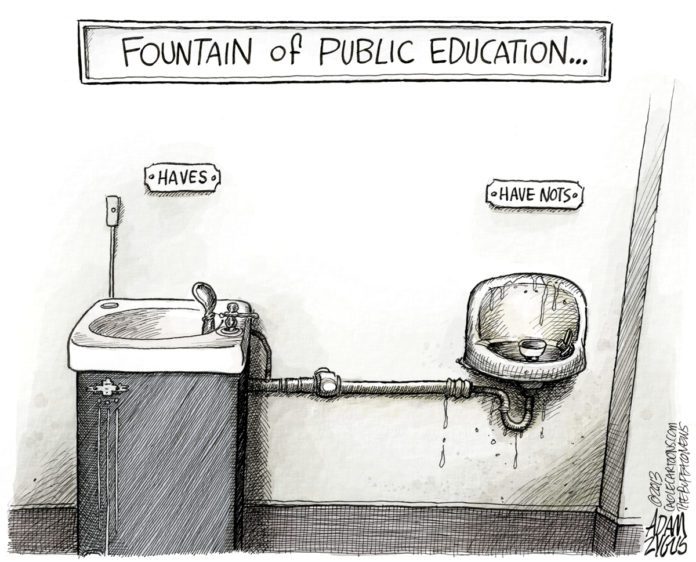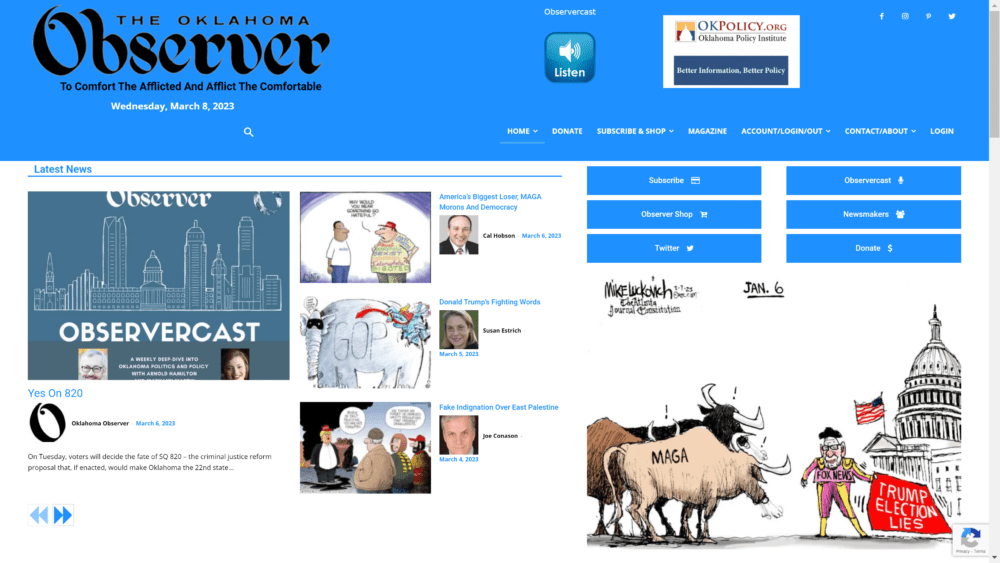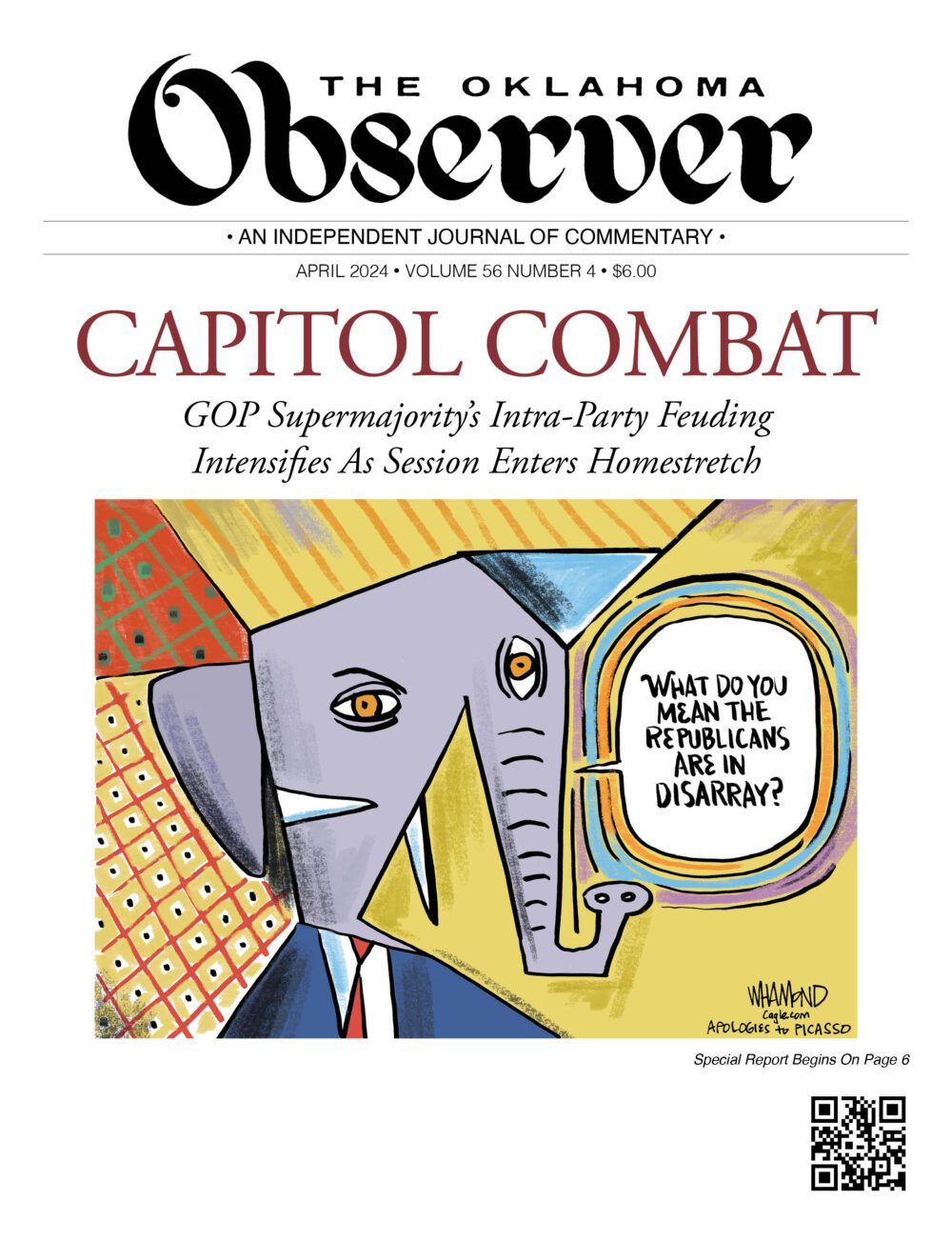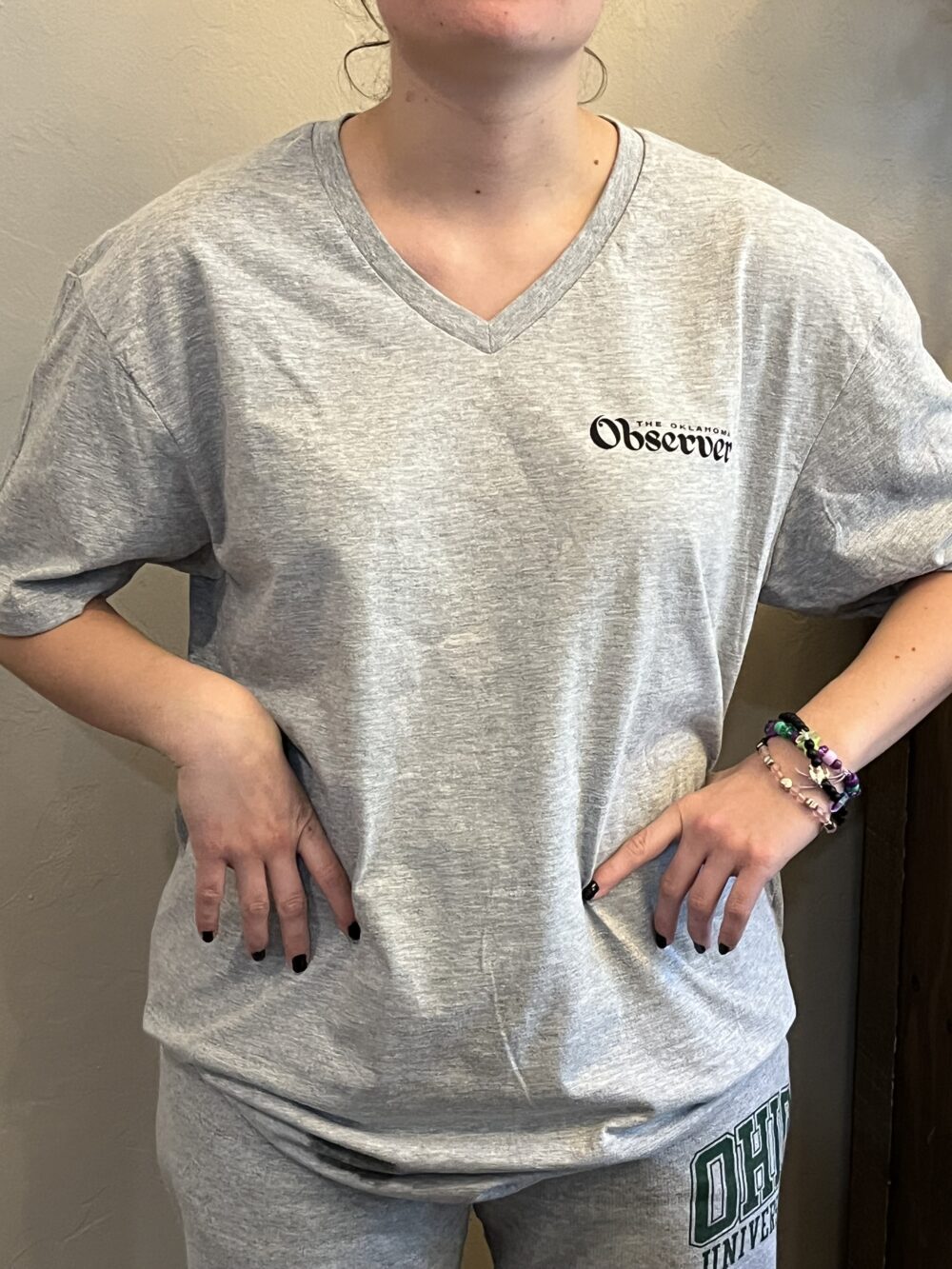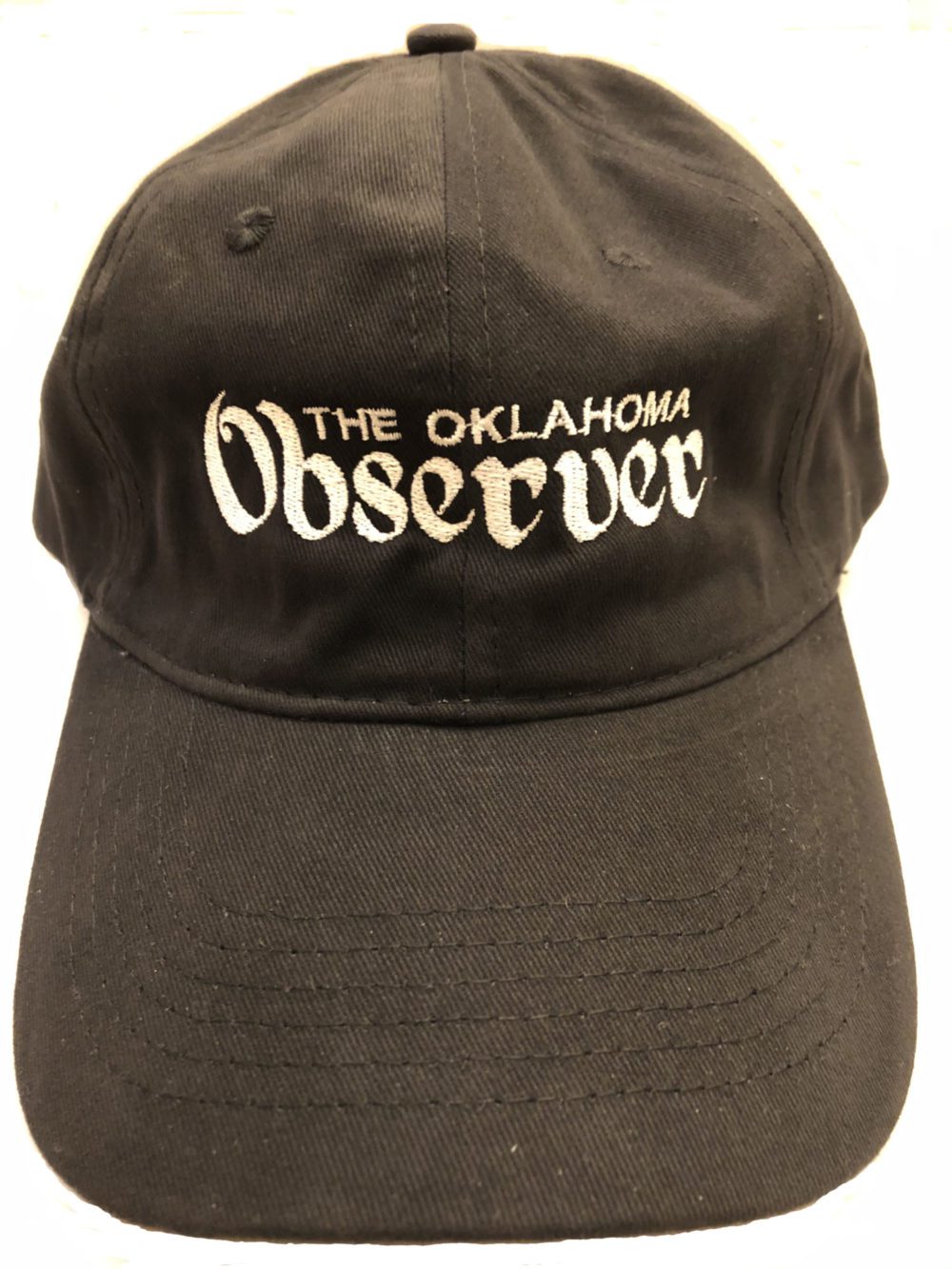Editor’s Note: The Observer’s August edition represents our Annual Education Issue. This is one of two cover essays written by outstanding Oklahoma educators exploring how we can fix a system crippled by standardized test mania. The second essay by Claudia Swisher will be posted Aug. 12.
BY JOHN THOMPSON
In 1983, my wife, Jocelyn, and I bought a small house in central Oklahoma City a block from Harding Middle School. After the fall of Penn Square Bank and the rise of crack and gangs, we saw conditions in our neighborhood that we had thought America had moved beyond.
I helped the Harding assistant principal, the late Barbara Outlaw, patrol the neighborhood for groups of truants. Those middle school students and I formed deep bonds as we played basketball, swam, gardened, hiked, camped, and engaged in project-based learning.
Volunteering for “Saturday School,” I learned the first rule of teaching – listen to the kids and they will teach you how to teach them. I once explained the carbon cycle, at first mostly to deaf ears, then coaxed compost into girls’ hands until one exclaimed, “so that’s worm dookie …?” After the screams, the students pulled the trick on their friends, and then re-taught the lesson to their friends.
Those experiences prompted me to change careers and teach high school. During the next decade, if I thought I had a tough day teaching at John Marshall, I would loop around the Harding entrance, watch the gang bangers with their Rottweiler guard dogs picking up their “little homies,” and remember that my job was a breeze in comparison to middle school.
In 2006, Hoover Middle School was moved into our building. Their faculty seemed even more energetic than high school teachers. Middle school students were particularly cute when they would sneak up to my class and peer in. I would always invite them in and introduce them to the high school world before sending them back.
With some of my most frequent visitors, I would toss them over my shoulder and carry them back to their classrooms.
It was more difficult playing basketball with middle school kids. First, I was afraid to step on those little critters. Second, at my age, I survived on the court by thinking ahead and anticipating my opponents’ moves. There was no way of anticipating, however, what eighth graders might do.
Even at the end of my career at Centennial, I preferred to walk down the middle school halls where I could meet new kids. The seventh and eighth grade hall, however, was worse than anything we could imagine on the high school part of the building.
I often walked toward the middle school hall and turned a corner to be hit by a wall of noise. It was physically painful. Sometimes, I glanced at the stunned teachers, as tweens ran wildly, screaming and shoving, and took a different route. Other times, I lowered my head, leaned forward as if I was battling a “blue norther” gale-force wind, and negotiated the pandemonium.
An incident in a faculty meeting crystalized my impressions. An administrator started yelling at the middle school teachers saying they wanted the principal to deal with Marlene’s behavior [as I will call her.] The administrator had just met with her mother, who said that over the weekend a gang member held a loaded gun to Marlene’s head, threatening to pull the trigger if she did not give up her brother’s location.
“Your classroom rules are the last thing on Marlene’s mind,” the assistant principal shouted. “Marlene’s mother does not care about your class.”
That evening a light went on as I returned home. The middle school building next to my home now houses two charter schools, including one that was nationally ranked for educational excellence.
When my dog and I walk by, low income children of color at these charter schools have no reservations about hugging Amy. My previous dog had been just as cute, but the students in the old neighborhood school, like the kids who had dropped out of that old school, had often cowered in fear when seeing him.
The kids at the old Harding, like our students at John Marshall and Centennial, had suffered trauma beyond anything that outsiders could imagine.
Now, the toxic concentrations of poverty that I had seen on the streets during the worst of the crack and gangs era during the economic crisis of the 1980s ruled Centennial. The type of intense trauma found in my neighborhood during our city’s worst economic challenge since the “Okie Movement” of the Great Depression was now in my middle school.
After 25 years of reform, we had found ways to get kids who had walked the streets during the day to attend school, but we had not found ways to provide them with a high-quality education.
My seniors saw the same thing. They once changed the assigned subject of an essay, turning it into a group project. They recorded the date of a classmate’s killing, and mourned her inability to attend a prom, graduate, or raise her son. They wrote that growing up in violence had taught them lessons for combating it.
In the new millennium, “All teenagers should have access to community centers. All students should have field trips. All children should have access to extracurricular activities.”
The repetition of the word “all” was crucial. By definition, the extracurricular activities they advocated were denied to failing students. Virtually by definition, upperclassmen were better able to participate in the school’s social activities, even though they would have been even more beneficial for the younger students who were struggling to find a way to join a community.
As my students understood, schooling must be defined as a team effort. That team effort must be a 21st Century version of a barn raising.
It is unlikely that educators, alone, could be physically or emotionally capable of sustaining the battle against poverty. We must draw upon the diverse strengths of our democracy. We must break down the silos that separate education from health, social welfare, and civic institutions.
At the same time, we must bring students out of their school buildings and into the community. In doing so, and by sharing our kids’ decency and wisdom with outside institutions, our entire society would benefit.
So, I dream of a time when Oklahoma City recognizes that schooling is an affair of the Heart, not a narrow portion of the Head.
Especially for middle school, we need full-service community schools. And I know firsthand that few things could be as rewarding as being a team member in a community middle school.
– Dr. John Thompson, an education writer whose essays appear regularly at The Huffington Post, currently is working on a book about his experiences teaching for two decades in the inner city of OKC. He has a doctorate from Rutgers University and is the author of Closing the Frontier: Radical Responses in Oklahoma Politics.


